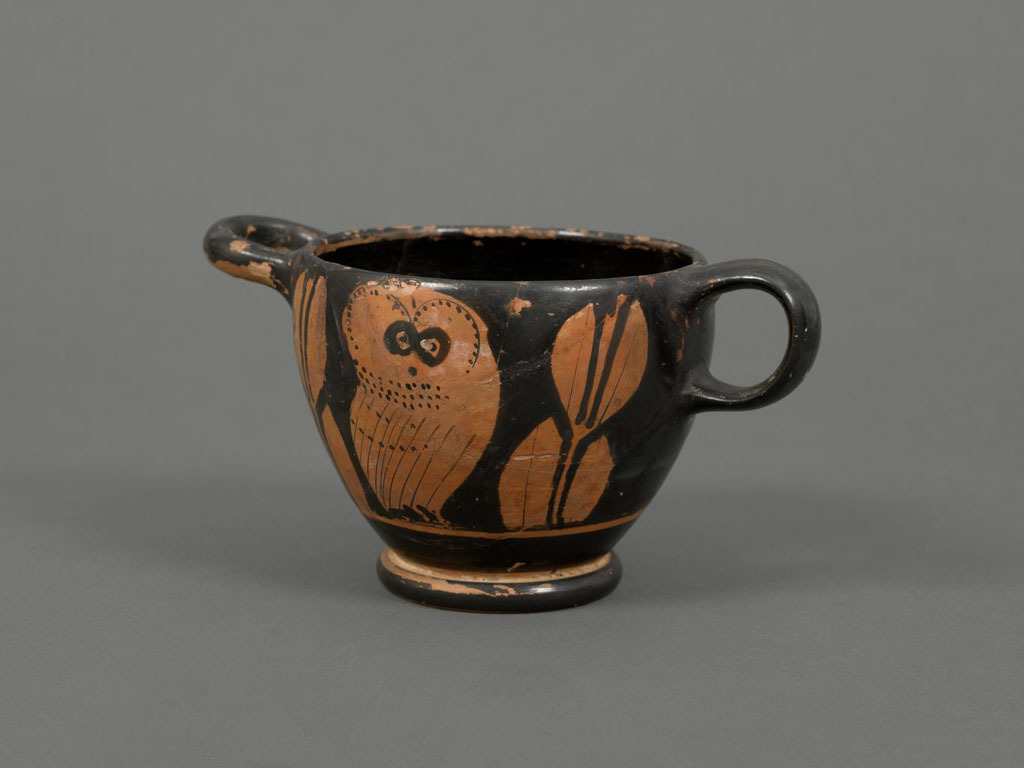This small vessel is identified as an owl cup, or glaux (meaning owl), by the distinctive subject of an owl between olive sprays that appears on each side. Both an owl and olive branches are associated with the city of Athens, Greece, and its patron goddess, Athena.
The shape of the cup is known as a skyphos, which has a reverse bell shape with a short foot. Another form of cup produced in ancient Athens is known as a kylix, which has a shallow bowl and tall stem (an example in the Menil Collection is 1970-048 DJ).
The cup belongs to archeologist Sir John Beazley’s Type B, as it has both a vertical and horizontal handle. While owl cups are fairly standardized, there are variations in the owls’ depictions. This owl with its dot-lined eyebrows, falls into Professor Franklin Johnson’s Group II, was most likely produced between 450-430 BCE. The type became so popular that it was both widely exported and imitated by other production centers, including Corinthian, Laconian, Apulian, and Etruscan variants.





